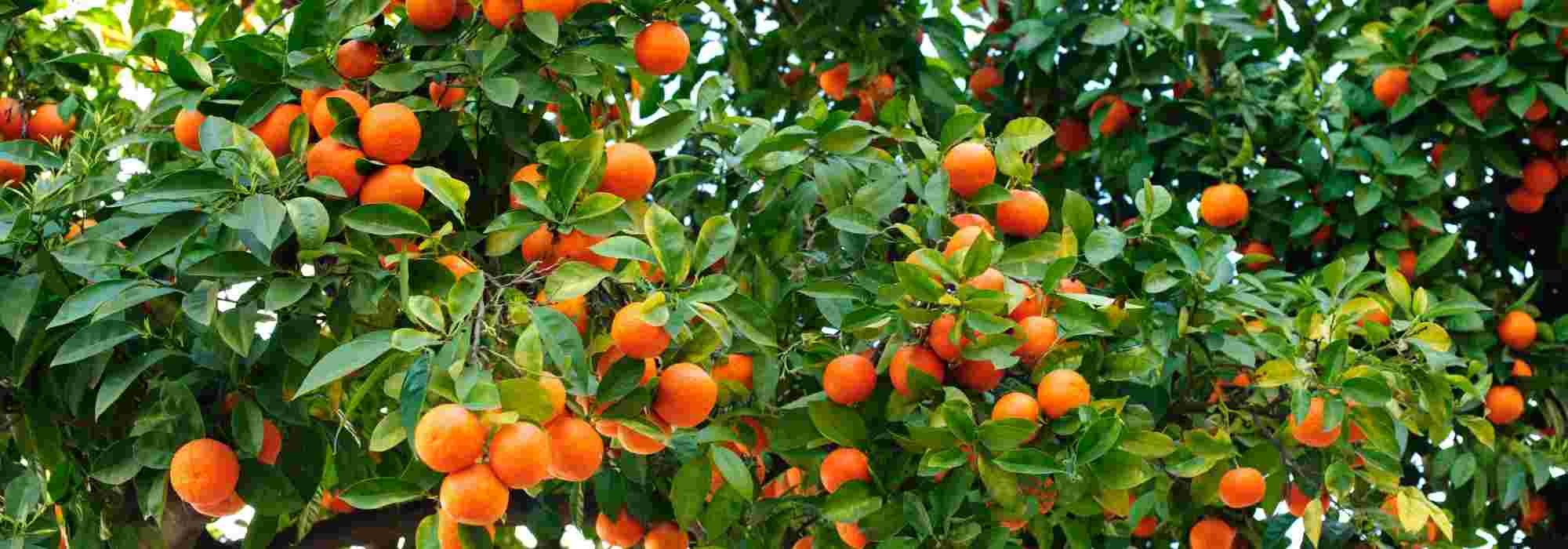
How to grow an orange tree in the ground or in a pot?
Planting, maintenance, management of diseases and parasites... everything you need to know about growing the orange tree.
Contents
The orange tree (Citrus sinensis), also known as sweet orange, belongs to the Rutaceae family. It is the result of ancient hybridizations between mandarins and pomelos, originating from Southeast Asia.Intimately linked to the sweetness and warm colour of its fruit, the orange tree has travelled the world via the silk roads, conquests, and colonisation.Cultivated in open ground for centuries in Mediterranean regions, it has found its place in orchards or private gardens. Elsewhere, cultivation in large pots is becoming the norm.
Discover all our tips for planting, cultivating, and maintaining an orange tree in open ground or in pots to achieve beautiful harvests.
Which variety of orange tree to choose?
There are three types of oranges, each suited for a specific use:
- Navel oranges with large, seedless, juicy, and fragrant fruits. The variety ‘Washington’ is certainly the most well-known.
- Juicing oranges.
- Blood oranges with a more or less pronounced red centre depending on the cultivar.
If the orange tree is appreciated for its glossy foliage and highly fragrant flowering, there are also orange trees with ornamental fruits. Thus, the ‘Corrugata’ orange tree, a fruit of hybridization between sweet orange and bitter orange, is decorative with its undulating-skinned oranges.
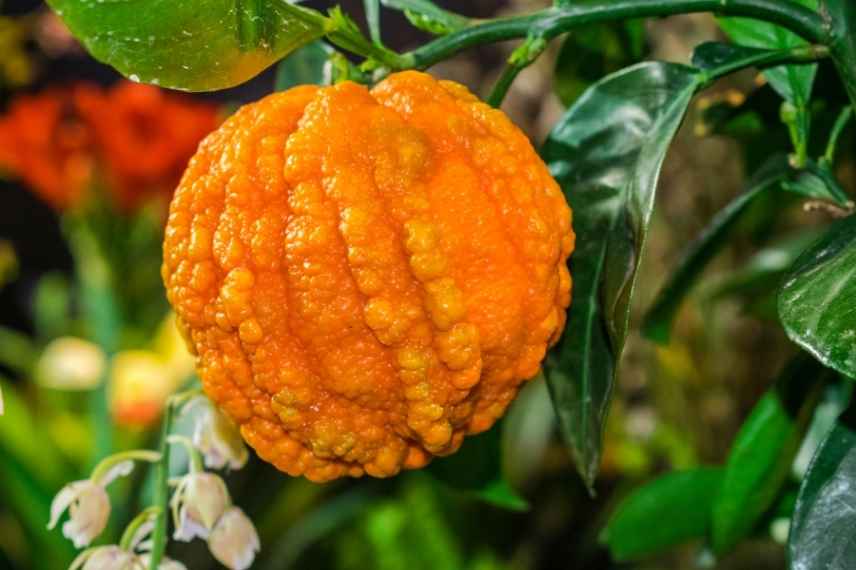
The amazing ‘Corrugata’ orange tree
Commercial orange trees are most often grafted onto rootstocks such as the bitter orange (Citrus aurantium) or the trifoliate orange (Poncirus trifoliata). These rootstocks provide superior hardiness, better disease resistance, and adaptability to different types of soil.
Planting the orange tree in the ground: where, when, and how?
Very little hardy, the orange tree is relatively resistant down to -5 to -7 °C. This is why it is grown in open ground across a wide area of the Mediterranean coast with mild and gentle winters, but it adapts perfectly well to container cultivation.
Where to plant?
It is essential to choose a sunny location, without being scorching, sheltered from the wind and cold drafts. As it does not tolerate sea spray, seaside gardens are not suitable for it.
It will also thrive in a light, well-drained and cool soil, rich in humus. It particularly fears clayey or poorly drained soils that retain moisture in winter. Similarly, it is wary of soils that are too calcareous or too acidic.
In open ground, the orange tree will adapt to good garden soil, enriched with compost, to which sand or pumice will be added to ensure drainage.
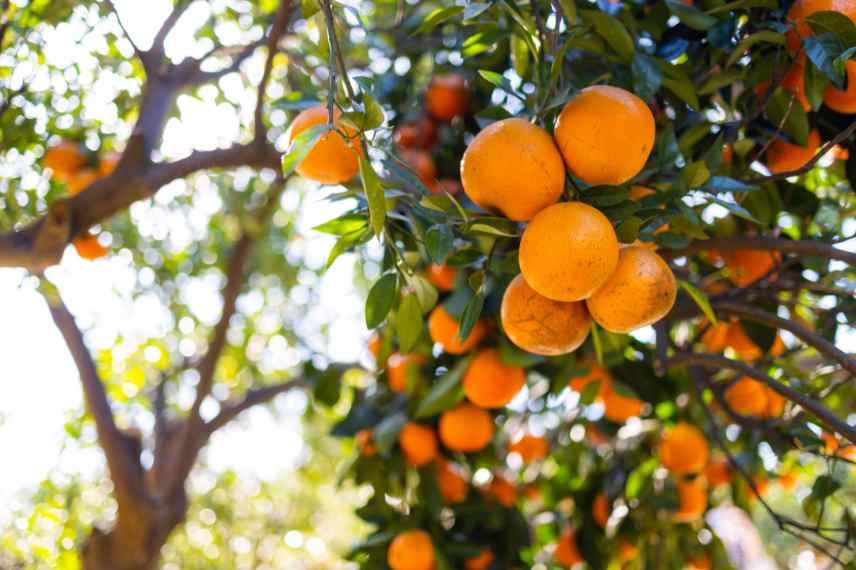 The orange tree loves rich, drained, and cool soilsWhen to plant?
The orange tree loves rich, drained, and cool soilsWhen to plant?
Spring planting, between April and May, is preferred. Avoid any period of frost or drought.
How to plant?
- Dig a hole two to three times wider than the root ball.
- Ensure good drainage by adding gravel or clay balls to the bottom of the hole.
- Soak the root ball in a bucket of water to rehydrate it.
- Amend with compost or well-rotted manure, mixed with the extracted soil.
- Place the root ball level with the soil, without burying the grafting point.
- Backfill, lightly compact to avoid air pockets, then water generously to ensure root contact.
- Mulch with organic mulch.
Pot planting: where, when, and how?
In regions where winters are colder, the orange tree is planted in a pot or container. This way, it can find its place on a balcony or terrace, in a courtyard or patio, sunny in the morning and partially shaded during the hottest hours. Windy locations should be avoided. In winter, it will move to a conservatory, a cold greenhouse, or a winter garden.
What pot and substrate to choose?
A pot with drainage holes should be chosen, neither too large nor too small, just slightly larger than the root ball. To facilitate drainage, a layer of clay balls or coarse gravel should be placed at the bottom of the pot.
The substrate will consist of 1/3 garden soil, 1/3 special citrus compost, 1/3 coarse sand, to which well-decomposed compost is added.
When to plant in a pot?
Ideally, planting should be done from March to May to avoid frost, as the orange tree can be placed directly outside.
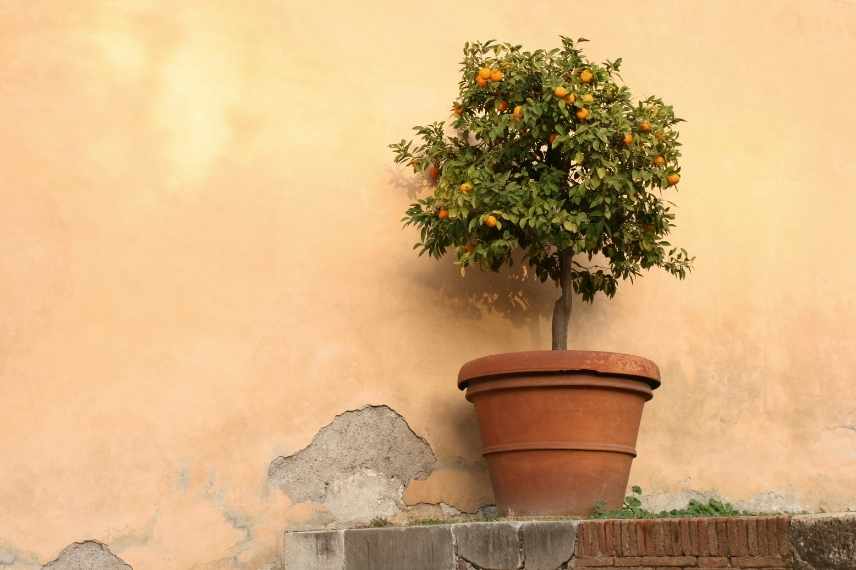
Growing an orange tree in a pot is demanding, but entirely possible
How to plant or repot an orange tree?
- Once you have chosen your pot with drainage holes, place your drainage layer (coarse gravel, clay balls).
- Soak the root ball in a bucket to rehydrate it.
- Fill half of the pot with your substrate.
- Gently untangle the roots of the root ball.
- Position the root ball about 2 cm from the edge, ensuring not to bury the grafting point.
- Fill the pot with the remaining substrate and gently compact it.
- Water thoroughly to well moisten the root ball.
- Apply organic mulch at the base of your orange tree.
What care does an orange tree need?
Like the lemon tree and the grapefruit tree, the orange tree is a citrus tree that is thirsty for water and fertiliser. This is why it requires regular maintenance to hope for a proper fruiting.
Watering the orange tree
In the ground, an orange tree should be watered regularly in spring and summer, but without excess. Always allow the surface to dry a little between waterings. In winter, the weather should suffice.
When grown in a pot, an orange tree is more demanding. Between March and October, waterings occur 3 to 7 times a week depending on the heat. In mid-summer, daily watering is recommended, especially during heatwaves. In winter, watering once a week is more than sufficient. Always allow the water to drain and empty the saucer or cache-pot.
Watering should be done with non-calcareous water at room temperature. Rainwater is the best.
Fertilising the orange tree
For orange trees grown in the ground, a compost application can be made in spring and autumn.
In pots, fertilisation is essential, as the substrate depletes quickly. From March to October, a liquid fertiliser specially for citrus trees should be applied every three weeks or a slow-release fertiliser specially for citrus trees every six months.
Pruning the orange tree
In spring, you can carry out light pruning with scissors or pruning shears on the new shoots to maintain its lovely rounded habit and stimulate flowering and fruit production. Take the opportunity to remove dead wood, poorly placed or damaged branches, and suckers.
Repotting the orange tree
This repotting should be done every 2 to 3 years, between April and June, or at the end of summer for older trees. When the orange tree can no longer be repotted due to its size, a top dressing is sufficient. Replace the top 10 cm of substrate.
Winter protection
In the ground, orange trees can tolerate temperatures down to -7 °C for short periods. However, they remain very sensitive to frost. This is why, in areas at the limit of hardiness, it is advisable to install a winter cover and mulch the base with a good layer of dead leaves.
Potted specimens should be wintered in a bright, unheated room (5 to 10 °C) such as a conservatory, winter garden, or greenhouse.
Managing diseases and pests
Scale insects and aphids are relatively common on orange trees, whether in the ground or in pots. A solution of black soap (5 tablespoons in one litre of water) is an effective and natural treatment. Repeat weekly if necessary. Red spider mites can also settle on the foliage of the orange tree. Mist or showering the foliage can help reduce their presence.
Regarding diseases, sooty mould can develop due to the presence of scale insects or aphids. It is essential to treat these pests to prevent the appearance of this black powder that blocks photosynthesis. Other fungal diseases may occur, often when growing conditions are not optimal.
To learn more: Orange tree: how to identify and treat its diseases and pests?
- Subscribe!
- Contents
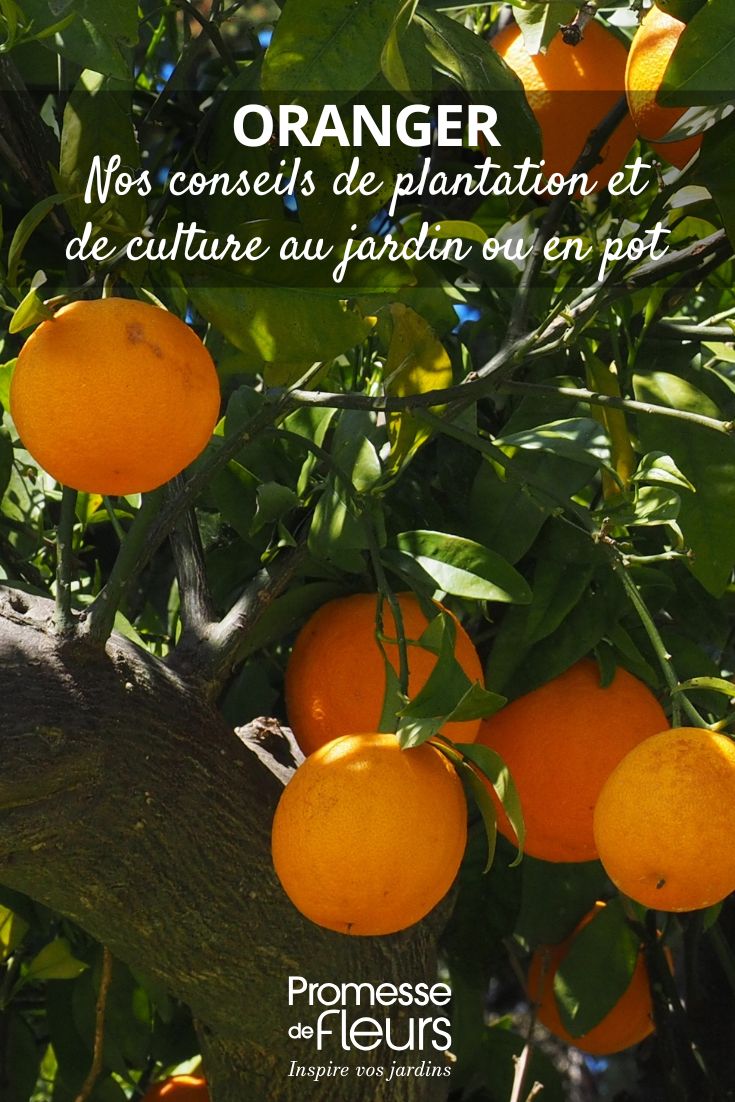































Comments